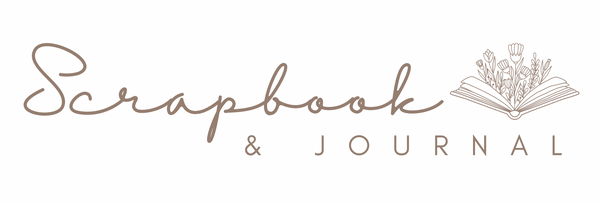
Junk Journaling: Art With Everyday Ephemera
Share
Junk journaling is an enchanting form of creative expression, blending the personal with the artistic. It's more than just a way to record your life; it's about turning the ordinary into something extraordinary. By preserving tickets, receipts, packaging, and other seemingly mundane items, junk journaling transforms clutter into a meaningful chronicle of your days.
What is Junk Journaling?
At its heart, junk journaling is a mix of scrapbooking, journaling and art. Unlike traditional journals or planners, there are no rules. Pages can be messy, layered, colourful or minimalistic. Each spread is a canvas for creativity. The joy lies in using what you already have—ticket stubs from a concert, receipts from a memorable café visit, tags from your favourite clothing purchase or even the wrapping paper from a thoughtful gift.
By incorporating these items into your journal, you create a tactile time capsule of your life, filled with textures, colours and stories that standard writing or photos alone can't convey.
Why Preserve Everyday Ephemera?
The beauty of junk journaling is its ability to celebrate the overlooked. That receipt from your favourite bookshop might seem disposable at first, but glued into your journal, it becomes a piece of a larger memory: the book you bought, the weather that day, the feeling of excitement as you flipped through its pages.
Tickets, packaging and other scraps aren’t just physical items—they hold meaning. A train ticket might remind you of an impromptu day trip, while the label from a bottle of wine might bring back a celebratory evening with friends. Junk journaling gives these fragments a second life, preserving their stories in a way that’s deeply personal.
How to Get Started
1. Gather Supplies: Start with a notebook, scrapbook or handmade journal. You’ll also need glue, scissors, pens and any decorative extras like washi tapes or stickers.
2. Collect Ephemera: Keep an eye out for items that hold meaning. Receipts, menus, tickets, leaflets and tags can all find a home in your journal.
3. Organise Your Layouts: There’s no right or wrong way to design your pages. Layer items, add doodles or write captions to tie everything together.
4. Mix and Match: Combine ephemera with other elements, like pressed flowers, stamps or magazine clippings, to add depth and texture.
5. Experiment Freely: Embrace imperfection! Let your creativity guide you, whether that means collaging a page full of colours or writing a reflective entry around a single item.
The Benefits of Junk Journaling
Junk journaling isn’t just about crafting; it’s a mindful practice that helps you slow down and appreciate the little things. As you arrange your pages, you relive those small moments, finding joy in their details. It’s a way to ground yourself in gratitude, creativity and memory.
Moreover, it’s eco-friendly! By repurposing items that might otherwise be discarded, you reduce waste and give new life to the everyday.
A Lifelong Keepsake
Over time, your junk journal will become a treasure trove of memories—a beautifully chaotic reflection of your life. Whether you’re recording a year’s worth of adventures or simply savouring quiet moments, each page will tell a unique story that only you can create.
So, gather those scraps and let your junk journal become a celebration of your own journey.
